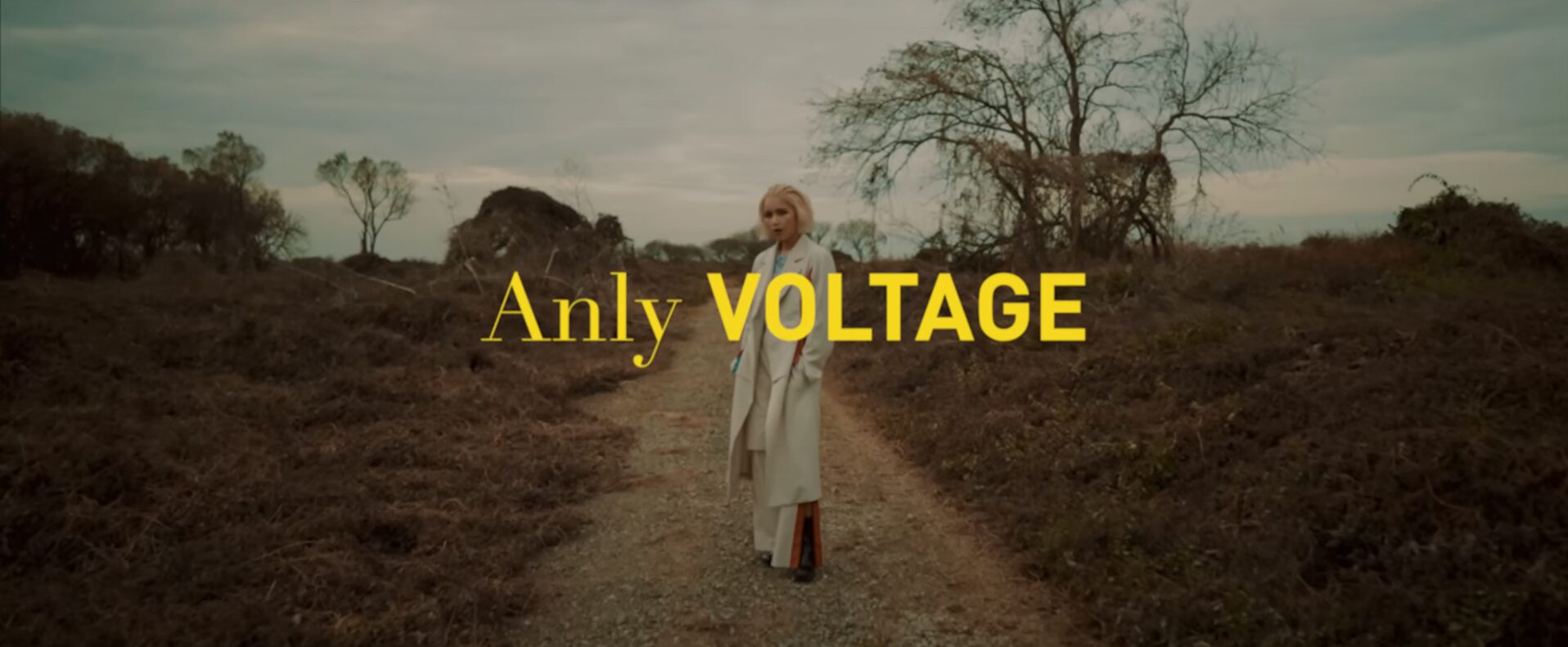Welcome to a special O!susume collab post from both Nagi and Erin! Aside from our usual biweekly music recommendation posts, we figured we’d use this space to talk about anything else that catches our eye/ear within the modern Japanese music scene. One of Nagi’s very first Broadcasts was for Anly, who back in 2018 was still a fresh face on the scene, a pop artist clinging to an acoustic guitar all the way from the Okinawan Islands. Her popularity since then has been explosive, and comes to the MV of her newest single “VOLTAGE” with an energy and confidence that show the pop star’s lifetime she’s been through in the past five years.
What’s especially cool, both Erin and I noted, was that just a week after VOLTAGE’s MV release on Youtube, Anly also published a second MV for the song, featuring her performing the lyrics in JSL, or Japanese Sign. Erin will take it from here to explain the significance of this event, and more details on the world of captioning and subtitles used for music videos and related media.
Erin: I found out about Anly from Nagi’s post, and this is my favorite release by her so far. I was excited right away to see that subtitles were available in English, and then I also saw that Japanese Sign Language was utilized throughout the official video as well. I thought this would be a great time to talk a little bit about subtitles and captions, and how to navigate listening to music in different languages on Youtube specifically.
“Captions” refer to a transcription of lyrics and other relevant information meant to describe audio when sound is not available—often meant for Deaf or Hard of Hearing individuals, or if you just want to watch a video without sound for any reason without losing any relevant audio information from the video. “Closed Captions,” or “CC,” refer to captions on a video that are only shown once the viewer activates them—often you can change the style of the captions in the settings if you need the text to be a different size or a different font. A cool thing about the CC on desktop Youtube is that once the captions are on the video, you can click on the text and drag the text to different places on the video if you are not happy with the current positioning.
“Subtitles” refer to a transcription of audio when sound is available but not understood, such as when you are watching a video in another language than you understand. In this instance, the transcription may not have all relevant audio information, but instead will have a translation of the lyrics to the song. Often Closed Captions and Subtitles are used interchangeably in casual conversation, but they do technically have different uses. Often for music videos the available transcriptions are just the lyrics to the song.
In order to open the available “Closed Captions” or “Subtitles” on a video on Youtube, you have to click the “CC” button on the bottom of the videoplayer. If there are no transcriptions available on the video, then this button will be grayed out. You can also click on the “Settings” wheel to the right of the “CC” button to change the language, depending on what the creator has made available to you. This “Settings” wheel is also where you can change the style of the transcriptions once you click on “Subtitles/CC.” The “options” will be on the top right of that box. Again, if the creator doesn’t have transcriptions available, then this option will not be there to see.
Sometimes if the uploader of the video has enabled it, you can also open up a full transcript of the Subtitles/CC so you can take a look at all of the transcriptions of the video in one area instead of just following the text during the video. If enabled, this is located underneath the video next to the “Like” “Dislike” “Share” and “Save” options at the three dots. Once you click on the three dots you can click on “Open transcript” and another box will open with the transcript. From there you can find three horizontal dots to “Toggle timestamps” on or off.
I was also excited to see a full Japanese Sign Language version of this song! Japanese Sign Language, similar to American Sign Language and spoken English, is a natural language distinct but influenced by the spoken Japanese language. Anly worked with HANDSIGN, a dance and sign language performance group to translate the lyrics into Japanese Sign Language (JSL) in order to have the meaning of the song be accessible to more people. I love how this video was filmed with Anly’s signing box (the area where she signs) being perfectly within the grass area behind her. This video also has “Open Captions” instead of “Closed Captions,” like I mentioned above. “Open Captions” are captions that are visible to all viewers and can not be turned off and are a part of the video itself. It’s interesting that they also included the English subtitles this way as well.
Overall I like the trend I’m seeing of Japanese artists including captions for their Japanese viewers, as well as subtitles in English. This can be a great tool for people trying to learn Japanese, or just for being able to see the official lyric translations while listening to a song. If you’re new to listening to music in Japanese, you can often find fan translation videos of whatever song you are interested in if there are no captions or subtitles on their official music video. Just search the song’s name and “English subs” or “English subtitles” and something might turn up if you’re curious about the lyrics.
ARTIST LINKS
Artist Site: www.anly-singer.com
Official Blog: www.ameblo.jp/anly-music/
Twitter: https://twitter.com/anly_singer
Part of this post was written by Erin; you can find them on instagram at @thekniterin.

